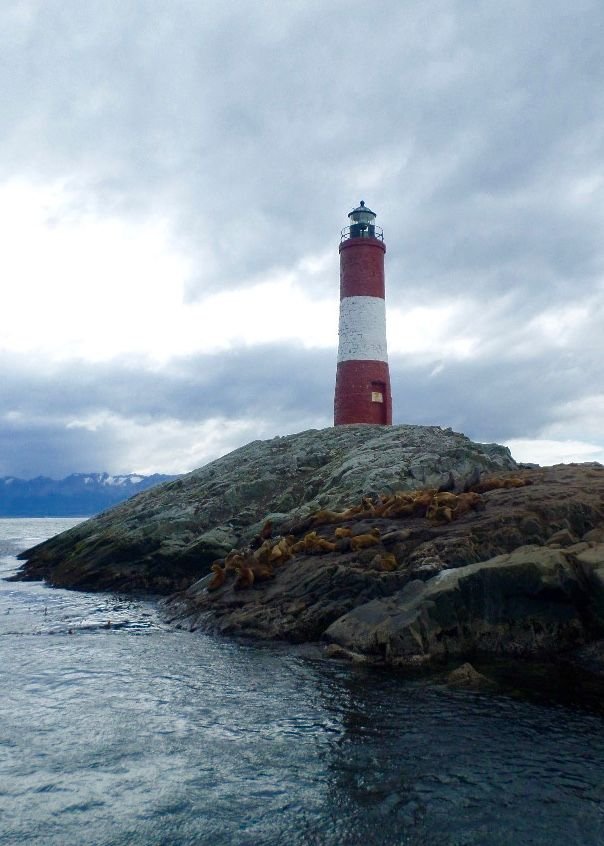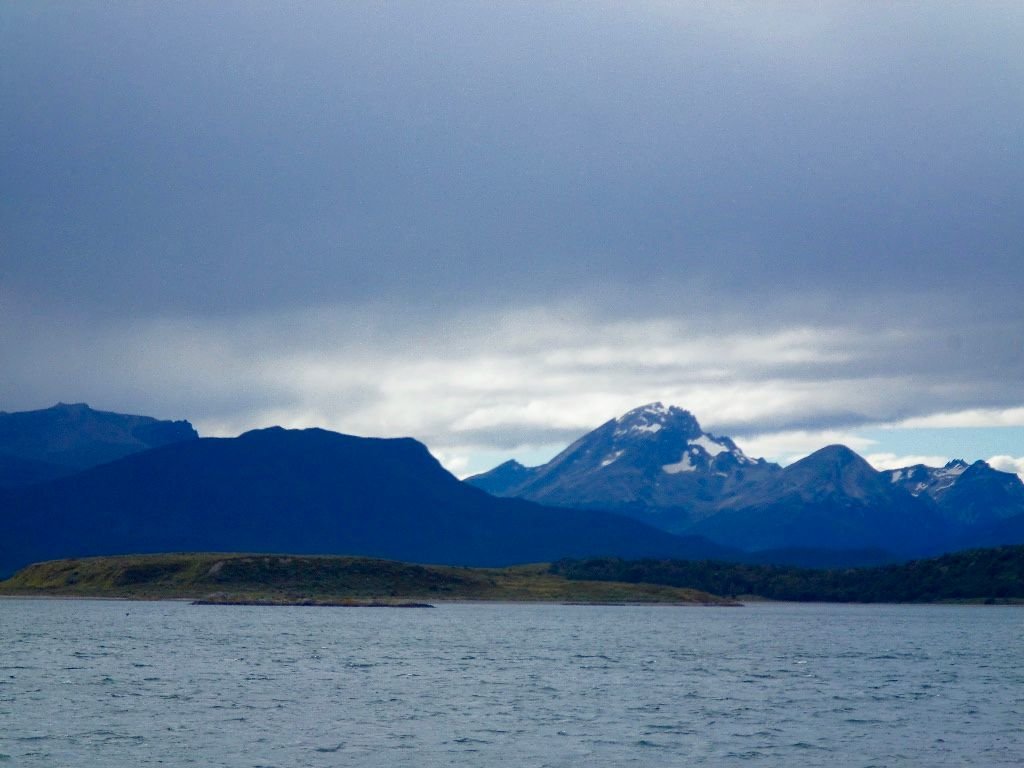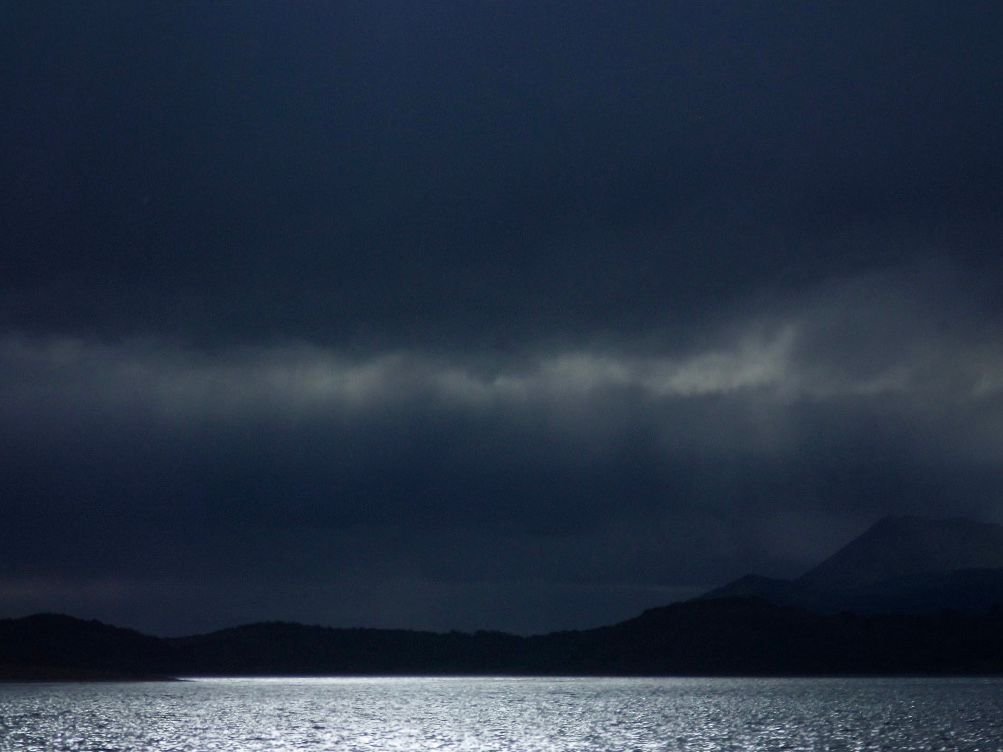The final stage of our trip to Patagonia and we were adventuring on the high seas. Well, not quite, but the Beagle Channel, where we were sailing, is the passage to Antarctica, so although we would not be venturing past the infamous Drake’s Passage, some of the roughest seas in the world which connect the Beagle Channel to the South Pacific, it was nevertheless quite awe-inspiring to imagine those who had, especially in the days when sailing was a far more uncomfortable and dangerous prospect.

It would have been amazing to take the trip out to Antarctica. In town we had checked out the prices. I was excited to spot a poster advertising a price of $500, and nearly ran in to the office to sign up there and then, until I realised it was $500 per day, for the 10 day trip.
We met a Japanese lady who was waving off a friend of hers to Antarctica in the boat pictured above. She told us that she was quite nervous for him, as the crossing of the rough Drake Passage takes two days, which I hadn't realised, and is far from comfortable in a small boat. But what an awesome experience it must be.

We, of course, were in a small but comfortable boat, with heated cabin and hot drinks available. But I tried not to let that distract me from experiencing the bleak, chill beauty of where we were. In fact we spent most of our time out on deck in the biting wind, better to appreciate the stunning views. And honestly, that heated cabin was really welcome as the sun went down.
The scenery is outstanding, bleak and windswept, but soulful. Mountains rise up from the channel, rocky isolated beaches, and islands dotted here and there. You can see why this place has the moniker ‘end of the world’. It really feels remote.
Wildlife
There's nothing better for me than seeing wildlife in its natural habitat and the Beagle Channel is hard to beat for the sheer amount of wildlife you can see. There are three main colonies to be seen: cormorants, sea lions and penguins. Seeing just one of these would have been special enough, but seeing three, and being able to get so close, was just awesome.

Approaching the Isla de Pajaros (Bird Island) all you see is a mass of black and white. The sheer number of cormorants on this island is incredible, with every surface seemingly swarming with them. From afar they look like penguins, the only clue that they're not coming when you realise that they're taking flight.
Back home I'd often watched cormorants skimming low across the sea at sunset on the way back to their roosting sites, but I'd never seen a cormorant colony before. I felt as if I'd stumbled into their secret club. In fact the whole trip had this sense of entering into areas which these creatures owned much more fully than humans ever could.


The neighbouring island, Isla de los Lobos, is colonised by sea lions. We heard the honking of the male long before we spotted him. He was a huge beast, weightily planted in the midst of dozens of females. I think there are also some pups in there. They seem to love being in contact with each other, all huddled together in one small spot of the island. The females must be heavy enough, but the male could be anything up from 270 to 360kg. Imagine being in a crush with him!
One of the things I appreciated about the trip was that it was organised to be as ecologically friendly as possible. Only small boats are used, and the trips from all operators take part within set hours, so that the animals are disturbed as minimally as possible. It was clear that the animals were not worried by the boat, in some cases swimming up to it to check it out; although it was made abundantly clear that we were not to throw food overboard for them. This enabled us to feel as far as possible like guests in the animals' homes, rather than invaders.
Les Eclaireurs Lighthouse
Les Eclaireurs Lighthouse is often mistakenly called the end of the world lighthouse. In fact the end of the world lighthouse is further east, but as Les Eclaireurs is the one that most tourists are able to photograph it's ended up substituting. It is very picturesque. It's still in operation, but is not inhabited, being operated remotely.

Penguins!
I think what we were all waiting for were the penguins. About two hours in to the trip we began to spot some of them swimming ahead of the boat. The excitement was building! Finally, we spotted Isla Martillo, and there on the shore, penguins, just hanging out! This was the first time I'd seen penguins in their natural habitat. I could have watched them for hours as they waddled around on the shore, just getting on with their business, seemingly oblivious to us humans staring at them from our boat. It was quite strange, though, to see them on this grassy, stony island, as in imagination they are always in icy terrain.



The majority of the penguins are Magellanic penguins and Gentoo penguins, but we were lucky enough to spot a rare pair of King penguins. In the photo above you can see them just emerging over the ridge towards the right of the photo. They are distinguished by their size, being the second largest penguins in the world - significantly taller than the Magellanic and Gentoo penguins - and by the orangey yellow markings around the neck.

You can also take a tour that allows you to get off the boat and walk on the island with the penguins. Only one operator is allowed to run this tour to keep numbers down. I think in a way it would have felt quite invasive to do this, although from what I've read this particular tour is run quite responsibly.
Aside from the penguins, cormorants and sea lions, you can also catch sight of shag and albatross swooping and diving around the boat. Unfortunately I couldn't grab any good photos, but the albatross in particular, with their huge wingspan, are magnificent. Most people were sitting inside the boat and only came out on deck to see the main sights, but gritting your teeth against the wind and staying out on deck as much as possible is really rewarding when you catch sight of these amazing birds.
The Yaghan tribes people
Although our tour did not stop off here, we did get a glimpse of the location of the Harberton Ranch, site of the first European immigrants to Ushuaia (although it was Argentinian it was first settled by a British family whose descendants still live in the ranch).

The first generation of this family arrived as missionaries, and had the attitude of trying to ‘civilise’ the native tribes, known as Yaghan, or sometimes Yamana, putting them in western style dress and even in one case taking three of them to England to show them off.
However, the next generations were a little more enlightened and tried to respect and integrate into the way of life of the tribespeople. They produced records of the way these people lived, how they survived, their cultural traditions, and their language, which are really fascinating.
 The sun was setting as we returned to port
The sun was setting as we returned to portSadly, as the land became more settled by outsiders, the diseases that they brought raced through the native population and wiped them out. Today there is considered to be only one surviving full-blooded Yaghan person. Christina Calderon, born in 1928, who lives in Puerto Williams, Chile, on the shore of the Beagle Channel. She's actually been denoted a living human treasure by UNESCO. It's incredibly sad to think that these people, who had developed ways of surviving in this harsh yet beautiful terrain over centuries, will soon no longer exist.
This was a truly amazing journey to the south of Argentina, from our trek on the Perito Moreno glacier, to exploring the end of the world Post Office, to the wildlife and landscape of the Beagle Channel, there was so much stunning scenery and many beautiful sights to take in. Definitely worth a return trip, and next time, Antarctica!
All photos by @freewheel
